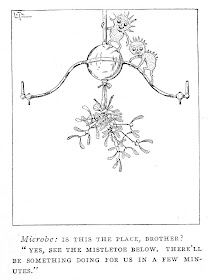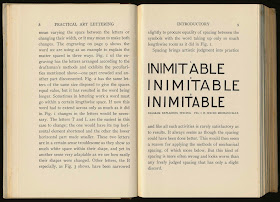The 1880 census recorded the siblings separation. In Philadelphia, William was a ward of the Bachmann household, while Flora and Earnest stayed with their uncle, L.P. Kurnstler and his family, which included Johanna Bachman, his mother-in-law. Lutz remained at Nazareth Hall. From 1885 to 1887, he was a student at the Pennsylvania Museum and School of Industrial Art according to the school’s Circular of the Committee on Instruction, for the years 1886–87 and 1887–88. In the following circular, 1888–89 (below), he was listed as a former student currently working as a general designer in Philadelphia.
Who’s Who said he studied with Howard Fremont Stratton, vice-president of the Pennsylvania Museum, and Thomas Eakins, instructor at the Pennsylvania Academy of Fine Arts. The Metropolitan Museum of Art’s Annual Report of the Trustees, Volumes 72-76, 1942–1946 noted the following: “Edwin G. Lutz presented a letter written to him by Thomas Eakins, dated June 14, 1889, together with a circular of the Art Students’ League of Philadelphia, Season of 1889-1890, Thomas Eakins, Instructor.”
He graduated from the Pennsylvania Museum and School of Industrial Art. At the June 9, 1892 commencement exercises, he received the Richards Second Prize for the best work in pen and ink (above). The Philadelphia, Pennsylvania, Marriage Index, at Ancestry.com, recorded his marriage, in 1892, to Ellen Ludlam Dangler. A listing in the Philadelphia City Directory 1893 said: “Lutz, Edwin G., designer, 716 Walnut, h 809 Spg Garden”.
His animal drawings were featured in The Monthly Illustrator, July 1895; below is the first of three pages.
The Pennsylvania Museum and School of Industrial Art
The Seventeenth Annual Report of the Trustees, page 16 detail
His animal drawings were featured in The Monthly Illustrator, July 1895; below is the first of three pages.
At some point Lutz moved to New York City and contributed illustrations to Joseph Pulitzer’s newspaper, The World.
November 22, 1896
December 6, 1896
December 13, 1896, top and bottom horizontal bands
December 13, 1896
December 13, 1896
December 27, 1896
December 27, 1896
December 27, 1896
December 27, 1896, bottom right
December 27, 1896
Life magazine published his illustrations.
On February 21, 1900, he applied for a passport and stated he planned to travel with his wife and return to the U.S. within two years. His occupation was artist and residence in New York City. His description was 5 feet 10 inches, eyes gray, hair dark brown, “moustached” and beard. The passport was issued two days later. Lutz departed before the 1900 census which began in June. Who’s Who said he studied at the Academie Julian in Paris. How long he stayed in Europe is not known, and records of his return have not been found.
The May 1902 issue of Country Life published a photograph (above) by Lutz. (He was credited in the index. Please note that the page 41 link will go to figure 25, but the figure 25 link will, incorrectly, go to page 25.) In the same year, his illustrations appeared in The Cosmopolitan for June, page 232, and July, pages 350 to 356. He was listed as a New York designer in the Circular of the School of Industrial Art of the Pennsylvania Museum 1904–1905.
The Cosmopolitan, July 1902, page 352
The 1910 census recorded him in New York City at 70 West 38th Street. He was an artist and illustrator and his wife was a milliner. The Century Magazine, January 1910, published one of his drawings. He was regular contributor to St. Nicholas magazine: May 1911, pages 595 and 635 ; June 1911, pages 699 and 732; July 1911, page 810 (scroll down); August 1911, page 952; and October 1911, page 1113 (scroll down). The Sunday children’s section of The Sun featured his work.
These copyrighted drawings were the basis for his first book, What to Draw and How to Draw It (1913). He reworked the newspaper drawings which were presented in the book without instructions.
The Cosmopolitan, July 1902, page 352
Lutz was one of many Life contributors pictured in December 9, 1909 issue.
Life, September 14 1911
New-York Tribune, November 2, 1913, review
The New York Times, November 30, 1913, review
What to Draw was followed by Practical Drawing (1915) and Practical Art Anatomy (1918). (All three titles available at the Internet Archive.)
Other drawings appeared in The Sun on April 6, April 27 and May 4, 1913, and advertisements for the Sunday edition highlighted his name. Over at the New-York Tribune, his illustrated article, “Queer Creatures That Fly or Nearly Fly”, was published September 22, 1912. His caricature of Theodore Roosevelt appeared in the July 20, 1912 issue of Satire, a Pulitzer periodical. The School of Industrial Art Circular 1918–1919 listed him (page 46) and his wife (page 44).
According to the 1920 census Lutz lived in New York City at 1110 Park Avenue. His wife was not listed even though he was still married. His occupation was artist in the moving picture industry; presumably he was an animator. It is not known who he worked for, when he started or how long he worked in animation. He may have worked at Bray Studios or the Barré-Bowers Studio or the International Film Service. He learned enough to write his fourth book, Animated Cartoons (1920). This book introduced Walt Disney to the fundamentals of animation which was explored in detail by J.J. Sedelmaier, who included a New York Times review of the book. Michael Sporn shared his observations on Lutz’s influence.
New-York Tribune, February 15, 1920, advertisement
Photographic Journal of America, April 1920, review
Social Hygiene, October 1920, review
The Sunday pages, in some newspapers, continued to be filled with illustrations from Lutz’s inventive mind. The eight-page “Book of Magic” featured artwork by him, Nell Brinkley, George Herriman and others. Color pages from the Seattle Intelligencer are at the Billy Ireland Cartoon Library & Museum Blog and database. Below is “The Magic Movie Wheel” from February 12, 1922.
Passenger lists at Ancestry.com show that he traveled overseas in 1925. He arrived in Southampton, England on May 15, and departed there August 12. His address in the U.S. was Weehawken, New Jersey.
In the 1930 census, Lutz was divorced and lived in Dumont, New Jersey at 119 Howard Street. His occupation was author of art books. He wrote five more books: Practical Landscape Painting in Oils (1930), Animal Drawing in Outline (1931), Practical Water-Color Sketching (1931), Practical Engraving and Etching (1933), and Practical Course in Memory Drawing (1936). He contributed art to Everyday Things in American Life: 1607-1776 (1937): “The greater number of uncredited line drawings in this work are by E.G. Lutz, the others are by N.C. Wyeth, and W.M. Berger.”
Lutz remained at the same address in 1940 where he carried on as an artist. In 1941 he renewed the copyright to What to Draw and How to Draw It.
Lutz passed away March 30, 1951, according to information provided by Frank Lutz, and laid to rest in Long Island, New York.
The executor of Lutz’s estate was his nephew, Royd C. Lutz, who renewed the copyright for Practical Graphic Figures in 1953, Practical Art Lettering in 1957, Practical Engraving and Etching in 1961 and Practical Course in Memory Drawing in 1963. Royd was born in 1895, the son of William, an ivory carver, and Mary; his sister, Ethel, was born in 1899. They lived in Palmyra, New Jersey according to the 1900 census. In 1910 they resided in Queens, New York, which was considerably closer to Lutz who lived in Manhattan. According to the New York Times, June 13, 1923, he graduated with a degree in law from New York University. He was listed in Martindale’s American Law Directory (1925) and New York County Lawyers’ Association, Year Book 1931. The 1930 and 1940 censuses recorded him and his family in North Hempstead, New York. The Social Security Death Index said Royd passed away December 17, 1988.
(Updated November 30, 2017; next post March 25: ASU Graphic Design Workshop)























.jpg)
.jpg)
.jpg)













.jpg)



































If you set out to make me think today; mission accomplished! I really like your writing style and how you express your ideas. Thank you.
ReplyDeletesewer jetter
This was an impressive read. I came across E.G.Lutz in a book based on his books and craved more knowledge of the man's training and work. Thank you very much for this.
ReplyDeleteNice Book
ReplyDeleteVery interesting book.
ReplyDelete